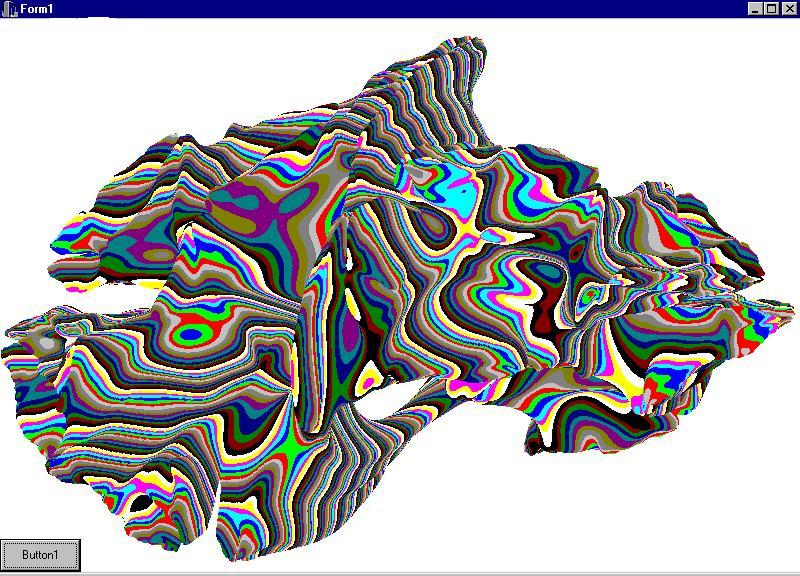
Return to index Life Sciences Publications
By Thomas Kromer
1 . Abstract and Introduction :
Biological
central nervous systems with their massive parallel structures and recurrent
projections show fractal characteristics in structural and functional parameters
( Babloyantz and Louren¸o 1994 ). Julia sets and the Mandelbrot set are the well
known classical fractals with all their harmony , deterministic chaos and beauty
, generated by iterated non - linear functions .The according algorithms may be
transposed , based on their geometrical interpretation , directly into the
massive parallel structure of neural networks working on recurrent projections.
Structural organization and functional properties of those networks , their
ability to process data and correspondences to biological neural networks will
be discussed .
2. Fractal algorithms and their geometrical interpretation
:
2.1 The algorithms of Julia sets and the Mandelbrot set:
Iterating the
function f(1) : z (n+1) = c + zn2 ,(c and z representing complex numbers
respective points in the complex plane), will generate the beautiful fractals of
the Julia sets and the Mandelbrot set (Mandelbrot 1982 , Peitgen and Richter
1986) . According to the rules of geometrical addition and multiplication of
complex numbers ( Pieper 1985) we can interpret function f(1) as describing a
combined movement :
First , the term :" + zn2 " in f(1) describes a movement
from point zn to the point zn2 . A lot of trajectories can connect these two
points, one is the segment of the logarithmic spiral through zn . ( In a polar
coordinate system we get a logarithmic spiral by the function f(2): r = aec*j .
Geometrical squaring of a complex number is done by doubling the angle between
the vector z ( from zero to the point z ) and the x - axis and squaring the
length of vector z (2) . Doubling the angle j in f(2) will also cause a squaring
of r . This proves point z2 lying on the logarithmic spiral through z
.)
Second , the first term of f(1), " c " ( meaning the addition of complex
number c ), can be interpreted as describing a linear movement along vector c
.
Both movements can be combined to a continuous movement along spiralic
trajectories ( according to Poincaré )from any point zn to the according point
(c+zn2 ) = z(n+1).We get two different fields of trajectories , one with
segments of logarithmic spirals arising from each point z n, the other as a
field of (parallel) vectors c .We can follow the different trajectories
alternately ( fig 2.1c ) or simultaneously ( fig 2.1d , 2.1e) . Various options
to
visualize the developments are shown in figure ( 2.1 a-f ) .
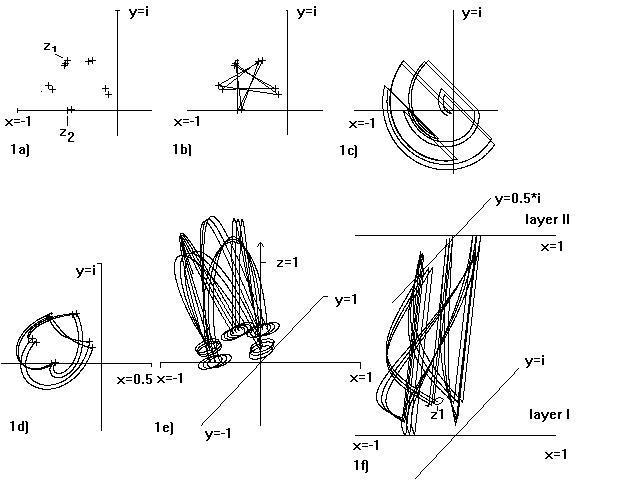
Figure 2.1 : Development of values acc. f ( 1 ) - ( c = -0.5 +
0.5* i , z1 = -0.5+0.5*i;
10 iterations): a) isolated values after each
iteration ; b) subsequent values connected ; c) following the trajectories of
terms " +c " and " z 2 " alternately ; d ) Trajectories of the combined movement
acc. f(1); e ) trajectories acc. Poincaré in 3 - dim. parameter - space, (
intersecting points with complex plane marked by circles ); f) The trajectories
projecting from layer I to layer II ( representing term " z 2 " and from layer
II to layer I ( acc. term " + c ").
2.2 Three - dimensional algorithms
:
We may transfer the principles of function f(1) into spatial algorithms in
a three-dimensional coordinate system . Because squaring of a triple of numbers
( coordinates on x - , y - and z - axis ) is not defined , the direct "
translation " of f(1) into a three-dimensional algorithm is impossible . The
following two algorithms will transfer some of the fundamental functional
properties of Julia sets to according three-dimensional fractal structures
:
Algorithm I ) In a three-dimensional coordinate system with x -, y - and
z-axis we can lay a plane through each point z(x1,y1,z1) and the x-axis.
In
this oblique " complex plane" we square z n . To the point " z (x1,y,z1)2 ",
which we thus find, we can easily add a three-dimensional vector c(x,y,z).This
addition of the constant vector c will bring us to a point z(x2,y2,z2) , which
will be the starting point of the next iteration . This algorithm generates
interesting spatial fractal structures on the basis of the two - dimensional
Julia sets which are formed by the respective vector c.
Algorithm II ) Before
adding the vector c in algorithm I , we rotate the oblique "complex plane"
together with the point "z (x1,y,z1)2 " around the x - axis , until ist angle
with the y-axis of the three-dimensional coordinate system will be doubled .
After addition of vector c the next iteration may be started . If we combine all
these three partial movements ( along the logarithmic spiral in the oblique
"complex plane" from z(x1,y1,z1) to "z(x1,y1,z1)2 " , the rotation of this
complex plane around its x-axis and the straight movement along the three -
dimensional vector c ) to one movement we get three - dimensional trajectories
from every point z(x1,y1,z1) to the according point z(x2,y2,z2) and on this base
spatial sets corresponding to two - dimensional Julia sets .
3.1 Neural
networks based on fractal algorithms :
In principle all trajectories can be
interpreted as symbolic representations of neurons . An iteration of a fractal
algorithm will move us from z n to z (n+1). As well , a neuron at any point z n
in a network could send its activity along its axon ( following the respective
trajectory ) to the point z (n+1) of the neural network . By this we can
transpose the fields of trajectories of any analytic function into the structure
of a neural network .
The inclusion - criterium of Julia sets ( points belong
to the Julia set , if the values we get in the following course of iterations
will not leave a defined zone around zero ) can be applied to the neural net too
: Neurons will belong to the net ( will survive ) , if they can activate a
certain number of neurons in a defined zone around zero .
3.2 Two -
dimensional networks :
We can construct neural networks with one or two
layers of neurons on the basis of function f(1):
A one - layer - net we get ,
if the neurons send their axons from the points (zn) directly to the points (c +
zn2) = z (n+1) in the same layer ( according fig.1e ).
If we transpose the
two terms of function f (1) into two different neural layers, we will get a
two-layer network ( according fig. 2.1f and fig. 3.2 )
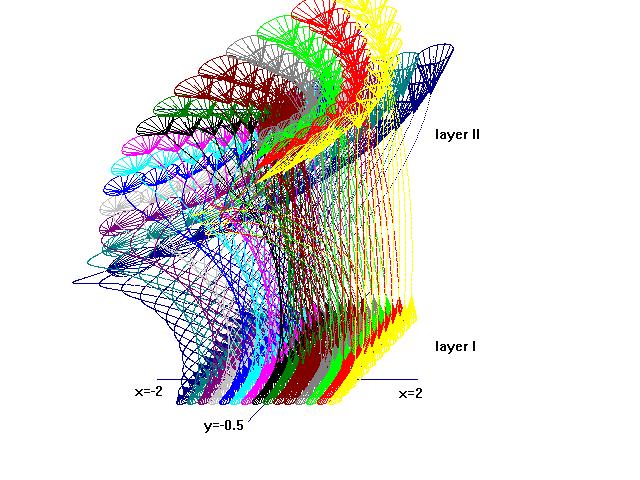
Figure 3.2 : Layer I of a neural network with two neural layers
. The axons of the neurons reflect the term " z 2 " of function f(1)
.
3.3 Three-dimensional neural networks :
As in the two - dimensional
case we interpret trajectories of three-dimen-sional algorithms as functional
neurons . Applying the inclusion - criterium of Julia sets , we finally get
three - dimensional neural networks ( fig. 3.3 ).
4 . Structural and
functional properties and features:
4.1 " Julia " - a network -
language?:
Because these networks are based on fractal algorithms ( which
they perfectly perform ), the patterns of activations in these networks show all
properties of Julia sets like self - similarity and symmetry of generated
structures and patterns, occurence of strange attractors , periodic and
aperiodic orbits , Siegel discs , zones of con- and divergence, implementation
of binary trees and amplification of small differences between slightly
different starting patterns.
Activating a neuron at any point zn will cause a
sequence of activation of neurons which will reflect the development of the
values we get by iterations of function f(1) in geometrical interpretation. In
many cases the activation of
two different neurons will lead to an activation
of the same circumscribed region in the course of the iterated activations . In
this region neurons get
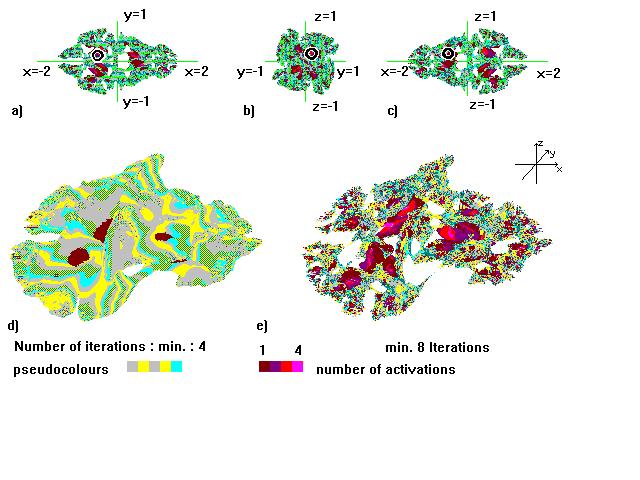
Figure 3.3 : Aspect of a three - dimensional analogon of Julia
sets , produced according algorithm II , constant vector c = -0.7(x) + 0.2(y) +
0.4(z) . A)-c) : view of structure e , orthogonal to the indicated plane , d and
e) 3-D impression , in d all neurons shown with at least 4 iterations before
values leave a radius of 5 around zero , in e) with at least 8 iterations .
Light colours are used to show the spatial structure , red colours to indicate
neurons , which may activate in the sequence of activation neurons in the region
around the point p = -0.4(x) - 0.4(y) - 0.2(z) with radius 0.09 ( region marked
in a-c by circle ) directly or by interneurons.
activation from both
starting neurons . They will be activated in a higher degree than other neurons
. These more activated neurons will be able to indicate the pattern of the
simultaneous activity of these two starting neurons ( figure 4.1 ) and may work
as " detector - neurons " of the specific input pattern .
4.2 Implementation
of binary trees , dialectic network - structure:
According to function f (1 )
, a neuron z as well as its negation , the neuron (-z) will activate the neuron
(c + z2 ) . Every neuron will have two predecessor - neurons and one subsequent
neuron . The neurons and their connections will perfectly model the structure of
a manifold binary tree . This will enable those networks to represent data with
hierarchical , binary order very well ( fig. 4.2 ). It should be very suitable
for dialectic processes , each neuron z representing the thesis , its negation (
- z ) the antithesis , both
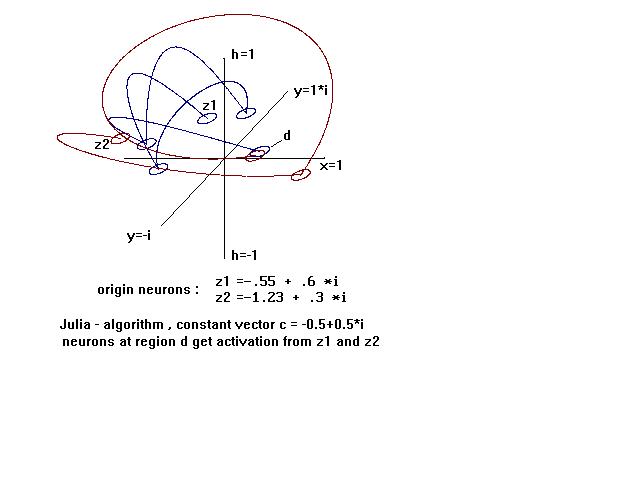
Figure 4.1 :Options for ( if connections are recurrent )
connecting and synchronizing neurons over a great distance and detecting a
specific input pattern by increased activation of neurons at d ,which will be
activated by both starting neurons z1 and z2 .
projecting their activity
to the neuron ( c + z 2 ) as representative of synthesis.
In three-
dimensional networks , based on algorithm II ( 2.2 ) , we get instead of a
binary tree a quartenary structure with each neuron having four predecessor -
neurons , thus increasing the connectivity of the network .
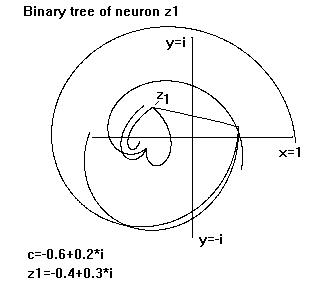
Figure 4.2 : Binary tree of the neuron z1 with two " generations
" of predecessor - neurons , one subsequent neuron .
Combining excitatory and
inhibitory neurons , the binary structure will allow to represent logical
structures in the networks.
4.3 " Somatotopic " structure , synaptic
learning , neural columns :
The structure of such networks is massive
parallel with neural axons
preserving their relationship during their course
, so the neural projections will be " somatotopic "( neighboured neurons will
activate neighboured regions of the network )( fig.3.2) .
Each region will
receive activation from many other neurons , due to the overlapping structures
of axonal endings and due to effects of convergence in fractal functions .Many
neurons will compete for activation with their overlapping arboreal dendrites.
There will be effects of synaptic learning , varying the pathway of activation ,
which will be no longer determined only by geometrical algorithmic rules ( as it
will be at the very beginning ) , but also by learning - history . Because every
signal will have to pass on every transmission a small neural network ( formed
by all neurons reaching the area of transmission with their dendritic structures
) , the whole net is working as net of nets of ... . ( In mammalian brains the
neural columns may represent these units of neural networks ) .
4.4
Handling of intermediate values :
Fractal functions need a "continuum" of
infinitely many numbers , whereas neural nets consist of a limited quantity of
neurons .Quite often an activation will not hit only one neuron exactly, but
will lead to an activation - maximum between two distinct neurons . Such an
intermediate result can be correctly represented by a simultaneous activity of
these two neurons analogue to the degree of activation they receive from their
predecessor - neurons . This transforming of intermediate values into analogue
degrees of activity of the neighboured neurons could be done by the overlapping
structures of dendritic and axonal endings . Using these processes , the maximum
resolution of two stimuli will no longer depend on the distance between two
neurons , but on the distance between two synaptic contacts. By the almost
infinite number of synaptic endings in neural networks we get the "
Quasi-continuum" of units , fractal processes need . This may be an important
task of the arboreal structures of dendritic and axonal endings beyond their
role in processes of synaptic learning .
4.5 Amplification of slight
differences between input patterns :
Slight differences between two starting
patterns may be amplified not only by effects of learning in the individual
history of the network but also because of the great sensibility of fractal
structures to little changes of starting or intermediate parameters . Similar
sensibility to slightly different patterns we can find in biological networks in
form of hyperacuity.
4.6 Input and output :
All neurons , or only
neurons in specialised regions of the networks , may have connections to
peripheral receptors or effectors or they themselves may represent these organs
. Thus the network can communicate with the external world .
4.7
Recurrent connections :
In biological nervous systems we often find recurrent
projections , each neuron not only activating its subsequent neuron but also the
neurons by which it has been activated itself. Such networks will not only
perform one algorithm but simultaneously its reversed function , ( in case of
function f(1) the function f(3) z ( n+1 ) = ( z (n ) - c ) 1/2 ). In this case
all neurons will send their activity to three others ( In case of nets based on
algorithm II to five other neurons because of the fourfold symmetry of these
structures ). Depending on the algorithm determining the net and the chosen
parameters , all neurons may thereby be connected over a smaller or greater
distance with almost each other neurons . The activity of one neuron may spread
like a wave over the entire net .
4.8 Synchronization of distant neurons
, representing complex concepts:
Depending on the choice of the parameter c
in function f (1) the course of activation through the neural network follows
certain regularities . For instance , the activation will rotate around a fixed
point steadily approaching to it , if the point is an attractor , while in case
of Siegel discs the activation will rotate in an elliptical orbit around the
fixed point (Peitgen and Richter 1986). In case of recurrent connections such
networks could work as " phone centers" which may provide a plenitude of
possibilities to connect different neurons of the network by " active axonal
lines " using the functional properties of fractal structures .These
possibilities to connect neurons by only few interneurons as shown in figure 4.1
may allow neurons , being activated by the same object , to synchronize their
activity . Synchronous activity seems to be an important feature for
representation of objects or complex concepts in central nervous systems . If
one starting neuron in fig. ( 4.1 ) should represent the term " cup " , the
other the term " tea " , the whole chain of active neurons in fig. ( 4.1 ) may
represent the term " cup of tea " .
4.9 Dynamic temporal activation
patterns :
Continuous flow of sensoric perceptions will lead to specific
temporal activation patterns . In the case of neural networks working with the
Julia - algorithm each neuron z 1 has certain subsequent neurons z n . For
example , different temporal sequence of activation of 3 origin neurons ( "t1" ,
"e1" , "n1" ) will produce different clusters of active neurons ( in the group
of their subsequent neurons ) . At any iteration ( n ) , " ten " would be
represented by simultaneous activity of the neurons t n , e (n-1), n (n-2) ,
whereas the word " net " would be represented by simultaneous activity of the
neurons n n , e (n-1) , t (n-2) . Synaptic learning leading to different limit
cycles will enable the net to differentiate between the words .
4.10
Information processing as task of the whole network :
Functional behaviours
stem from altered activities of large ensembles of neurons and thus they are a
network property ( Wu et al 1994 ). In fractal networks each neuron is
influenced by many others and itself influencing also many other neurons . Fig.
4.10a shows an example to which degree a region can be influenced by the entire
network . In reversal this region is influencing by recurrent projections wide
parts of the net .
The superposition of all wave functions caused by the
input neurons will result in an entire wave function . We get an information -
coding related to holographic information storage ( The relation becoming even
closer , if we assume periodic " coherent " waves of activity, we find in brain
functions ( Destexhe 1994 ), interfering with the activity waves caused by the
fractal pathways ).
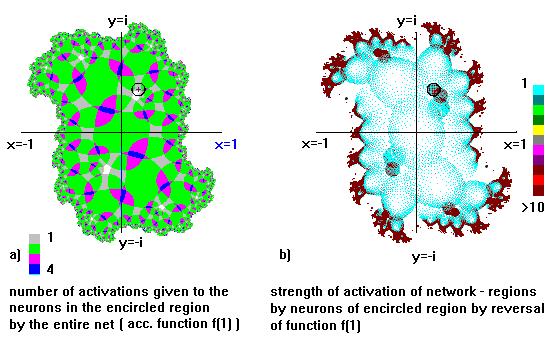
Figure 4.10 : Neural net based on a Julia - algorithm , constant
vector c = 0.25 + 0.25*i . A) Indicated by pseudocolours is the degree , to
which the network regions can activate neurons in a region around z = 0.17 +
0.43*i with radius 0.065 ( marked by a black circle ) in the course of
activation sequences . B) Showing to which degree the neurons of the mentioned
circumscribed region can activate other regions of the net by recurrent
connections ( reversal of function f(1) according function f(3)).
Each
input pattern will cause a highly specific activation pattern as result of the
interference of the influences of each input neuron to the whole net . Regarding
Fig. 4.10b we can interpret the diagram of the strength of influence of one
region or neuron to the net as diagram of some sort of a wave function
.
4.11 Options for associative memory functions :
Following
considerations may be hypothetical : Activation patterns caused by neural input
or active network neurons will cause a specific temporal activation sequence in
each neuron . Each neuron may registrate the received activating sequence , for
instance in form of ribonucleic-acid -( RNA ) molecules , each ribonucleic
nucleotid representing a certain degree of activation ( Corresponding to an old
Quechuan knot - script used in Inca - empire ) . The neurons would thereby get
filled with lots of such memory - RNA - molecules ( The role of RNA and
subsequently produced proteins in learning processes is not yet completely
understood ( Birbaumer and Schmidt , 1996)). If there would be no special input
into the net dominating the neural activity, one neuron will begin to send a
sequence , it has learned earlier , using the RNA - molecules as " songbook ". (
This process mediated by Ion pumps or - channels , being regulated by the
sequence of the RNA - nucleotides in the RNA - molecules ) . The neurons
connected with that neuron may registrate this sequence. They may synthesize in
real time an according RNA - molecule and then look by means of detection of
homologuous molecules ( which is a common task in genetic and immunological
processes ) for RNA molecules with a homologuous ( beginning - ) sequence ( and
most probably best fitting further sequence ), they have synthesized earlier
.Using these molecules , they could tune in and send activity fitting to the
developping pattern into the net . By and by all neurons could be caused " to
sing one song " , to reproduce one pattern ( which may win upon other
competiting starting patterns ), using memory molecules in a self - organizing
process . Each neuron could make its own contribution to the developping
patterns , comparing the produced memory - molecules with earlier produced ones
, using those to give the produced pattern its own specific modulation and
completion . Thus the memory of the net would be associative . Also the reversed
input of recorded temporal activity may reconstruct activity - patterns , as has
been shown for wave - transducing media ( Fink 1996 ).
Of course , these
considerations are speculative . But all means neurons need to perform such
procedures are not far from being conceivable .
5 . Resemblances to
biological neural networks :
Planar and spatial neural networks based on
fractal algorithms show morpho-logic and functional correspondences ( in the
reflection of fundamental aspects of development and function ) to biological
neural networks :
In both we may find :
· biomorph symmetrical structures
like lobes and hemispheres ,gyri and sulci and cavities similar to ventricles ;
the axons of neurons projecting massive parallel , " somatotopic " , some
crossing the median line in form of a decussatio ( fig. 5b).
· each neuron
being connected to almost all other neurons by only few functional interneurons
( fig. 4.10 ).
· periodic and aperiodic orbits as basis of deterministic
chaotic activities in biological nervous systems ( Freeman 1987) as well as in
fractal functions, the visualization of functional parameters in fractal
nets
resembling to pictures we get by neuroimaging procedures .
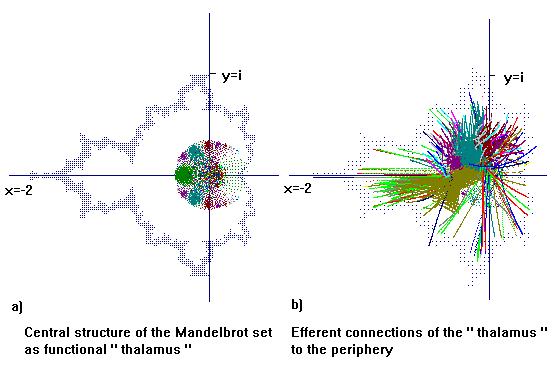
Figure 5 : Central structure of the Mandelbrot set ( values near
zero , which occur in the periodic orbits) in structure and function analogue to
a " Thalamus " with distinct "nuclei " ( fig. 5a) , specific efferent
connections to the periphery shown for "neurons" with y*i > 0 , demonstrating
the " Decussatio " of some " Fasciculi " , crossing the median line , resembling
to biological thalamic connections ( fig.5b).
· activation patterns
developping in the course of recurrent projections between peripheral "cortical"
and central "thalamic" structures . An according central structure we can find
in the Mandelbrot set in which each region has its own periodic sequences coming
with a certain frequency relatively close to zero. From these " neurons " of the
central structure near zero , the activity will be projected to the periphery
again ( Fig. 5 ) . Like the Thalamus , this central structure of the Mandelbrot
set consists of distinct " nuclei " .
· information processing being a task
of the entire network .
· the possibility to activate the entire net from a
circumscribed region ( near an attractor of f(1) by the recurrent projections of
the reversed function in fractal nets , from some hippocampal regions in human
brains in epileptic seizures )
· wave functions playing a role in network
function .
· existence ( or at least possibility ) of associative memory
functions .
In ontogenetic development of organisms the orientation of
growing axonal fibres in fields of concentration gradients of different
neurotrophic growth factors could reflect the course of trajectories in fractal
functions. Thus neurons and their axons may form spatial neural networks , based
on specific fractal algorithms .
6. Conclusion :
The specific fractal
characteristics enable these networks to perform a new kind of data -
processing. Their macroarchitecture is defined by fractal algorithms. On the
microstructure they may use the principles of conventional neural networks to
modulate the response of each neural column according to learning history of the
network . Each signal will pass many small neural networks ( in form of the
neural columns) on its way through the entire network which therefore acts as a
net of nets .
The abstract structure of the networks is dialectic by manifold
binary trees in which the activity is propagated in wave fronts , whose
interference allows the entire network to take part in the processing of data
.There are remarkable correspondences to biological neural networks , which may
be due to reflecting the principles of fractal algorithms in morphogenetic
events . Further investigations on these structures promise to offer a chance to
produce a new kind of neural networks and to improve our knowledge about
function and structure of biological nervous systems .
References
:
Babloyantz A , Louren¸o C ( 1994 ) Computation with chaos : A paradigm
for
cortical activity , Proc Natl Acad Sci USA , Vol 91 pp 9027 - 9031 ,
Biophysics
Birbaumer N , Schmidt RF (1996) Biologische Psychologie, p 598 .
Springer Berlin
Destexhe A (1994) Oscillations , complex spatiotemporal
behavior , and information
transport in networks of excitatory and inhibitory
neurons.
Physical Review E , Vol 50 Nr 2 : 1594 - 1606
Fink M (1996)Time
reversal in acoustics , Contemporary Physics 37 , 2 : 95 - 109
Freeman WJ (
1987) Simulation of Chaotic EEG Patterns with a Dynamic Model of
the
Olfactory System .Biol Cybern 56 : 139-150
Mandelbrot BB ( 1982 ) The Fractal
Geometry of Nature . Freeman , San Francisco
Pieper H (1985) Die komplexen
Zahlen . Deutsch , Frankfurt a. Main
Peitgen HO, Richter PH ( 1986 ) The
Beauty of Fractals - Images of Complex
Dynamical Systems . Springer , Berlin
Heidelberg
Wu J , Cohen L, Falk C (1994) , Science 263 , 820 - 823
e-mail:Thomas.Kromer@t-online.de